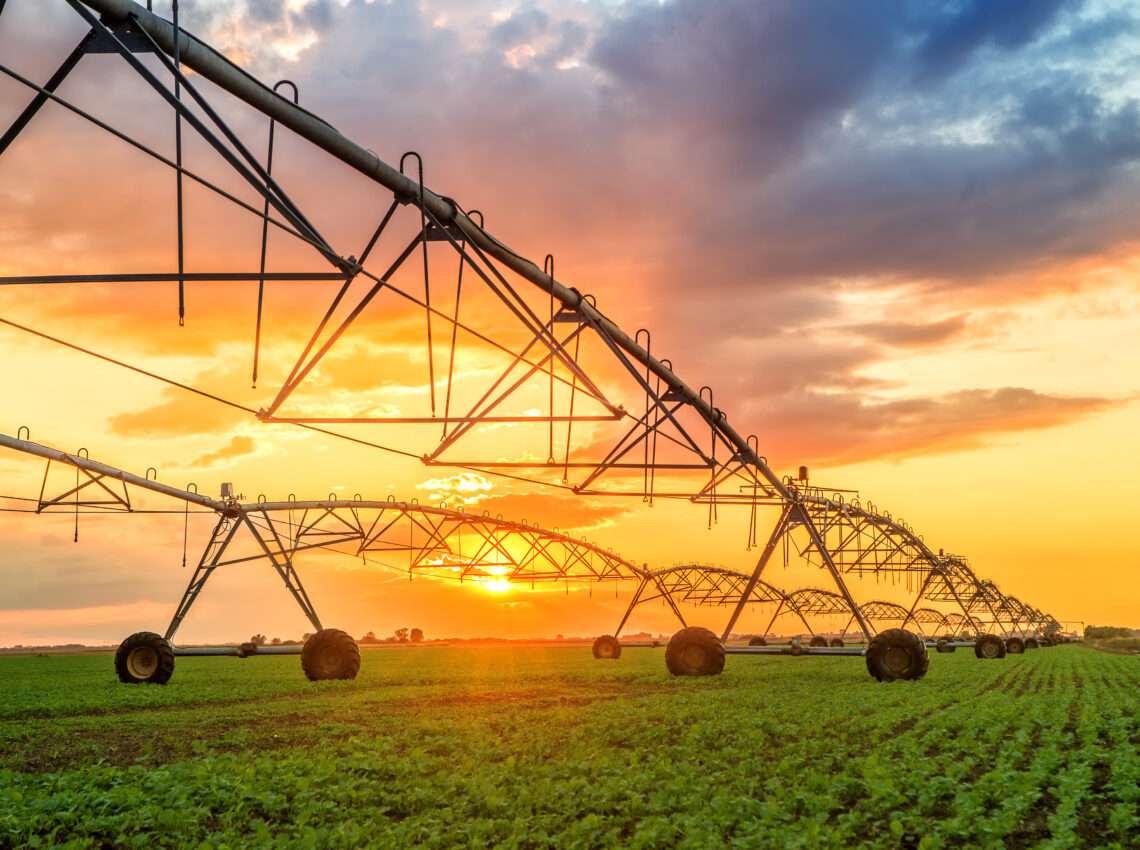5 Steps of Creating a Disaster Recovery Plan for Agribusiness
The Growing Importance of Cybersecurity in Agribusiness
Modern farming has gone digital. Today’s farms use smart sensors, automated systems, and data analytics to boost crop yields and manage livestock. This digital shift brings new risks to the farming world. Hackers now target farming operations just like they target banks and tech companies.
Cyber Risks in Modern Business Continuity Plan in Agriculture
Farmers face real cyber threats every day. Attackers try to steal crop data, mess with equipment settings, or lock important files for ransom. Last year, a major grain producer lost access to their systems for two weeks due to a cyber attack, causing massive losses during harvest season.
Impact on Farming Operations
When cyber attacks hit farms, the effects spread fast. A single breach can shut down automated irrigation systems, mess up temperature controls in greenhouses, or stop product deliveries. This leads to crop damage, livestock issues, and broken customer trust. A medium-sized dairy farm in Wisconsin lost $50,000 when hackers took control of their milking system for just three days.
Step 1: Finding Weak Spots in Farm Security
Understanding where attacks might come from is crucial. The most common entry points are unsecured farm equipment, weak passwords on control systems, and outdated software. We track these vulnerabilities using security scanning tools like Nessus and Acunetix.
Protecting What Matters Most
Not all farm systems need the same level of protection. Smart farms must focus on their most important assets first. This includes systems that control irrigation, feeding schedules to avoid downtimes, their backup to avoid power outage situations, and crop data storage. We map out these critical systems and build security measures around them.
These first steps lay the groundwork for a strong farm security plan. The digital age brings both opportunities and risks to farming. With proper planning and the right security measures, farms can stay safe while enjoying the benefits of modern technology.
Step 2: Developing a Comprehensive Cybersecurity Plan
A strong cybersecurity plan serves as your farm’s shield against digital threats. This plan needs to cover everything from daily operations to emergency responses. The key is to make it simple enough for everyone to follow but thorough enough to protect your farm.
Building Your Farm’s Security Policy
Start with basic security rules that everyone can understand. Use strong passwords for all farm equipment and change them every three months. Install security updates as soon as they’re available. Keep backups of important data in a separate location. For example, store crop yield data both on local computers and in secure cloud storage.
Setting Up Security Protocols
Each piece of farm technology needs its own security setup. Modern tractors need password protection and regular software updates. Weather stations and soil sensors must use encrypted connections. Security cameras should be on a separate network from critical farming systems. Tools like Cisco’s security suite help manage these different systems from one place.
Training Your Farm Team
Farm workers are the first line of defense against cyber attacks. They need to know what suspicious emails look like and how to spot unusual equipment behavior. Monthly training sessions keep everyone up to date. We use real examples, like the time a farm worker spotted unusual activity in the irrigation system and prevented a major cyber attack.
Making Security Part of Daily Farm Life
Security becomes second nature when it’s part of regular farm routines. Check system alerts during morning rounds. Update passwords when changing seasonal equipment. Back up data after recording harvest numbers. These simple habits prevent most security problems before they start.
This combination of clear policies and practical training creates a strong defense against cyber threats. When everyone knows their role in keeping the farm secure, the whole operation runs smoother and safer.
Step 3: Establishing a Disaster Recovery Plan
When cyber attacks hit, quick action makes all the difference. A solid recovery plan gets your farm back up and running fast. Think of it as your emergency playbook for cyber disasters.
Building Your Recovery Point Team
Every farm needs a dedicated group ready to handle recovery process with their recovery strategies on cyber emergencies. The team includes key people like the farm manager, IT specialist, and equipment operators. Each person knows exactly what to do when problems strike. The farm manager leads the response, while equipment operators handle immediate system shutdowns if needed.
Clear Roles Save Time
Time matters during cyber attacks. The irrigation specialist handles water systems, while livestock managers focus on feeding systems. The IT person works on fixing network issues and recovery team manages the recovery time objective. Having clear roles means no confusion during emergencies. A recent case showed how a cattle farm’s quick-response team stopped a cyber attack within 30 minutes, saving thousands in potential losses.
Smart Data Backup Plans
Regular backups protect your farm’s vital information, which somes under farm’s data protection tasks. Store copies of crop data, equipment settings, and business records in multiple places. We use both local storage and secure cloud services like AWS for farming data. Daily backups of critical systems and weekly backups of everything else keep your information safe.
Testing Your Recovery Plan
Practice makes perfect with emergency plans. Run through recovery drills every few months. Test backup systems to make sure they work. Examine how long it takes to get systems running again. One dairy farm cut their recovery time from two days to four hours through regular practice.
A well-prepared recovery team and reliable backups keep your farm strong against cyber threats. When everyone knows their role and systems are backed up properly, your farm stays resilient no matter what happens.
Step 4: Implementing the Disaster Recovery Plan
A recovery plan only works if you test it regularly. Real-world practice reveals gaps in your defense that paper plans might miss. Smart testing keeps your farm ready for anything.
Regular Testing Saves Farms
Monthly tests catch problems before they become disasters. Last month, a corn farm’s test revealed their backup system wasn’t copying new equipment settings. They fixed it before harvest season started. This kind of testing prevents major losses.
Making Tests Count
Run different types of tests throughout the year. Check backup systems one month. Practice emergency shutdowns the next. Time how long it takes to switch to backup systems. A large potato farm discovered they could cut recovery time in half by changing their backup process.
Emergency Response Steps
When attacks happen, clear steps matter. First, disconnect affected systems to stop the spread. Next, activate backup systems to keep critical operations running. Then, bring in cyber security experts to clean up the mess. Tools like Cisco’s Incident Response help track these steps.
Communication During Crisis
Everyone needs to know their part when trouble hits. Farm managers alert the response team. IT specialists assess the damage. Workers switch to manual operations if needed. Keep emergency contact lists updated and easily accessible. During a recent attack, a soybean farm’s clear communication plan helped them recover in just six hours.
These proven methods keep farms running even when cyber attacks strike. Regular practice and clear procedures turn potential disasters into manageable problems. Your farm stays productive while others might struggle to recover.
Step 5: Continuously Improving Cybersecurity and Recovery Measures
Cyber threats change fast. Today’s security fixes might not work tomorrow. Keeping your farm safe means staying current with new threats and solutions. Modern farming needs modern security that grows with your operation.
Watching for New Threats
Security tools like Splunk and AlienVault spot unusual activity in farm systems. These tools send alerts when something looks wrong. A wheat farm caught a new type of ransomware last week because their monitoring system noticed strange files appearing in their crop management database.
Keeping Security Fresh
Update your security measures every quarter. New threats need new defenses. Check that old solutions still work. Replace outdated systems. One citrus grove updates their security rules monthly based on reports from agricultural security groups.
Learning from Experience
Every security event teaches valuable lessons. Write down what worked and what didn’t during tests or real attacks. A dairy farm improved their recovery time by 60% after learning from a minor breach. They found faster ways to restart their milking systems after shutdowns.
Making Smart Updates
Change your recovery plan based on real results. If backup systems take too long, find faster options. If workers struggle with security steps, simplify them. Tools like Microsoft’s Security Assessment help spot areas that need work.
Good security grows like healthy crops—with constant care and attention. Each update makes your farm stronger against cyber threats. When you keep improving your defenses, your farm stays safe in our connected world.
Conclusion:
Building a Strong Defense for Your Farm’s Future
Modern farming faces new digital challenges every day. Our five-step plan creates a strong shield against cyber threats. Start by finding weak spots in your systems. Build a solid security plan with trained teams. Create backup systems that work when needed. Practice your recovery plan until it becomes second nature. Keep improving your defenses as threats change.
Small steps today prevent big problems tomorrow. Just like protecting crops from pests, protecting farm technology from cyber threats needs constant attention. Strong cyber security keeps your farm running smoothly in the digital age.


